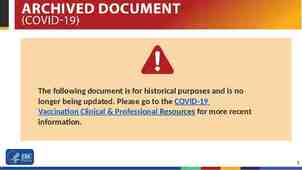Chemical Inventories
7 Slides338.47 KB

Chemical Inventories

Building Your Chemical Inventory Conduct a review of all production and support processes (maintenance, cleaning, power generation, etc.) to identify ALL chemicals used on-site Obtain and review chemical information of each chemical SDS RSL/MRSL testing Create a standardized inventory of all chemicals used Include relevant information on inventory

Chemical Inventory – Good or Bad? Department Gluing Name GL-100 Hazard(s) - Flammable - Health Hazard - Irritant (eye, skin) Supply Vendor Dynex Chemical

Chemical Inventory – Good or Bad? Department Trade Name Gluing GL-100 Chemical Composition CAS # % Composition Methyl cyclohexane 108-87-2 45 – 50% N-heptane Modified natural rubber 142-82-5 40 – 45% N/A 10 – 15% Hazard(s) - Flammable - Health Hazard - Irritant (eye, skin) SDS # SDS-005 Container Quantity 25L Supply Vendor (Name, Address, Phone) Dynex Chemical Ltd., 144 Austin Rd, Hong Kong - 852 2345 5678

Chemical Inventory – Good or Bad? Revision Date: 01/21/2017 Example Chemical Inventory List # Storage/Use Location Dye Kitchen 1 Production Storage A Dry Chemical 2 Storage Process Fabric Dying Fabric Dying Chemical Name Acetic Acid LFS-200 Supplier/Contact ABC Chemicals tel. (555)9393-2020 Chemstar tel. (555)2020-9393 On Approved Chemicals Lists? Yes Chemicals CAS # % Composition SDS # Acetic Acid 64-19-7 99.99% Silica 7631-86-9 35% Yes Flammable - category 3, Corrosive - Serious eye damage, category 1, Skin SDS-01 corrosion, category 1A SDS-02 Aluminum 7429-90-5 65% Hazard Class Environmental Hazard Acute hazards to the aquatic environment, category 1 Quantity Stored Annual Consumption to date 250L 1500L 20kg 600kg

Use Your Chemical Inventory Inventory Database Can be separated by: Production areas Processes Product lines Departments Chemical hazards classes

Use Your Chemical Inventory Identify and prioritize hazardous chemical for substitution Restricted chemicals, significant human/environmental health impacts Track chemical usage quantities Can be used in the development and tracking of targets Identify any unknown chemicals on-site and regulate purchasing approvals Serves as a list of chemicals approved for purchase Standardize purchasing schedules and quantities Reduce over stocking, expiration Identify any redundant chemistries or areas of excessive use A chemical inventory is a living document that should be reviewed and updated regularly (at least every 6 months) by dedicated and trained staff






